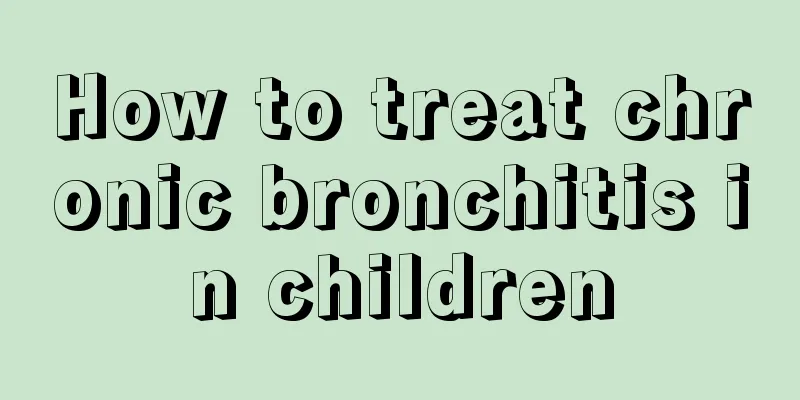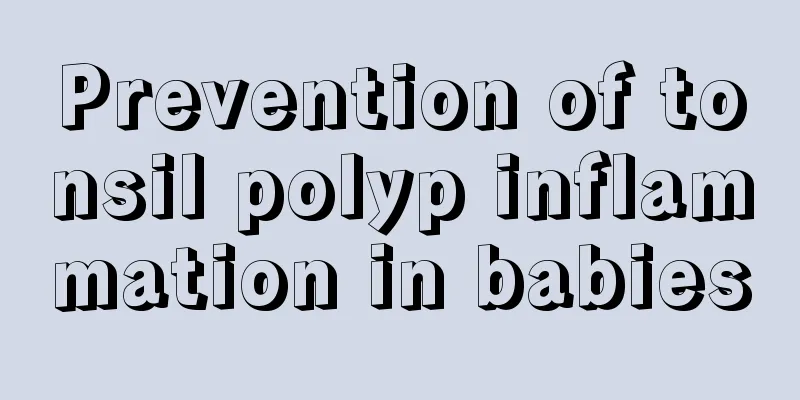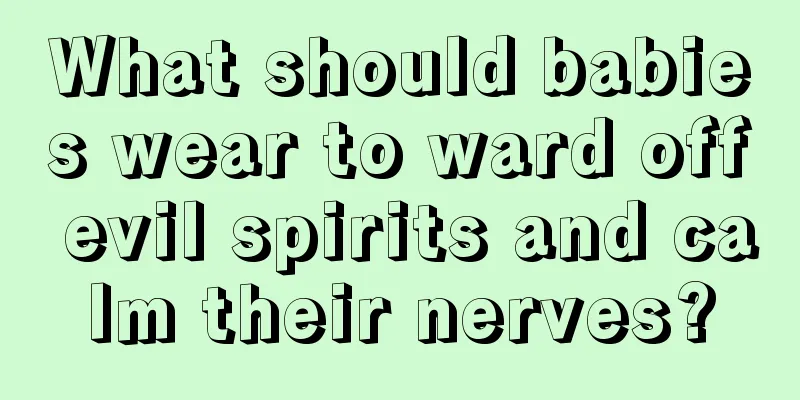How to treat chronic bronchitis in children

|
The cure rate of chronic bronchitis in adults is extremely low, let alone in children. Therefore, after discovering that a child has chronic bronchitis, parents need to start treating the child's chronic bronchitis as soon as possible and treat the child as soon as possible. So, what are the treatments for chronic bronchitis in children? Let me introduce it to you below. 1. General measures include paying attention to nutrition, strengthening outdoor activities and physical exercise. Related causes such as sinusitis, nasopharyngeal carcinoma, etc. should be cured promptly. After severe pneumonia, follow-up observation for a long time is necessary, especially for children with adenovirus pneumonia, who should undergo X-ray examinations until recovery. Pay attention to seasonal changes and avoid possible allergens to reduce the number of attacks. Nonspecific triple vaccine injection can increase serum interferon and leukocyte phagocytic ability and is worth trying. During the clinical remission period, it is advisable to strengthen exercise, enhance physical fitness, improve the body's resistance and prevent recurrence. Patients should be educated and advised to avoid and reduce various risk factors. 2. To control infection, antibiotics should be selected according to the main pathogens and severity of the infection or based on the drug sensitivity of the pathogens. Mild cases can be taken orally, while more serious patients can use intramuscular injection or intravenous drip of antibiotics. Commonly used antibiotics include penicillin G, erythromycin, aminoglycosides, quinolones, cephalosporins, etc. If narrow-spectrum antibiotics can be used alone, broad-spectrum antibiotics should be avoided as much as possible to prevent secondary infection or the production of drug-resistant strains. Sulfamethoxazole dry syrup, 1/2 packet once for children aged 2-5 years, 1-2 packets once for children aged 6-12 years, orally 3 times a day. Or acetylspiramycin tablets, 20-30 mg per kilogram of body weight per day, orally in 4 divided doses. 3. Expectorant and antitussive drugs: For patients in the acute attack period, expectorant and antitussive drugs should be used at the same time as anti-infection treatment to improve symptoms. Patients in the chronic stage should especially adhere to medication in order to eliminate symptoms. Commonly used drugs include ammonium chloride mixture, bromhexine, and vindesine. Chinese patent medicine also has a certain effect in relieving cough. Cough: compound licorice mixture, 1 ml per year, 3 times a day. Severe cough: Take Kebiqing for patients over 5 years old, 6.25-12.5 mg each time. Difficulty in coughing up phlegm: Take ammonium chloride 20-60 mg per kilogram per day, orally in 4 divided doses. From the above, we can see that when treating chronic bronchitis in children, the best method is to understand the indications of various treatment methods, and then combine them with the symptoms exhibited by the children's chronic bronchitis patients themselves, and finally determine which treatment method to choose, so that the treatment of the child's disease will be more effective. |
<<: What is the standard temperature for newborns?
>>: The reason why the newborn's body temperature is 38 degrees
Recommend
Inguinal hernia in children
Inguinal oblique hernia is still relatively commo...
Reasons why children's palms and soles sweat
Children are the apple of their parents’ eyes. Th...
Can children eat pearl powder?
Pearl powder is a traditional Chinese medicine. I...
Two month old baby retching frequently
When I was two months old, I relied on milk powde...
What is the reason for a seven-month-old baby's hoarse voice?
Many mothers will find that their babies have hoa...
What to do if a child has blisters caused by burns
If burns are not treated correctly, normal treatm...
What is the cause of blue spots on the baby's body?
Nowadays, every child is the treasure of the fami...
What are the reasons why children shake their heads?
At different stages of children's growth, chi...
The best age for phimosis surgery in children
Generally speaking, phimosis surgery can be perfo...
What causes vitiligo in children?
Young children are still in the development stage...
White pimples on baby's neck
I don’t know if some mothers have found that thei...
What to do if your baby is having a reversed day and night cycle
Because the baby is just born, it is very normal ...
What are the dangers of fatty liver in children
When it comes to fatty liver, many people are not...
What are the diagnostic criteria for hypertension in children?
What are the diagnostic criteria for childhood hy...
How to solve the problem of breastfeeding baby not eating bottle
Many mothers will find that they have been breast...









